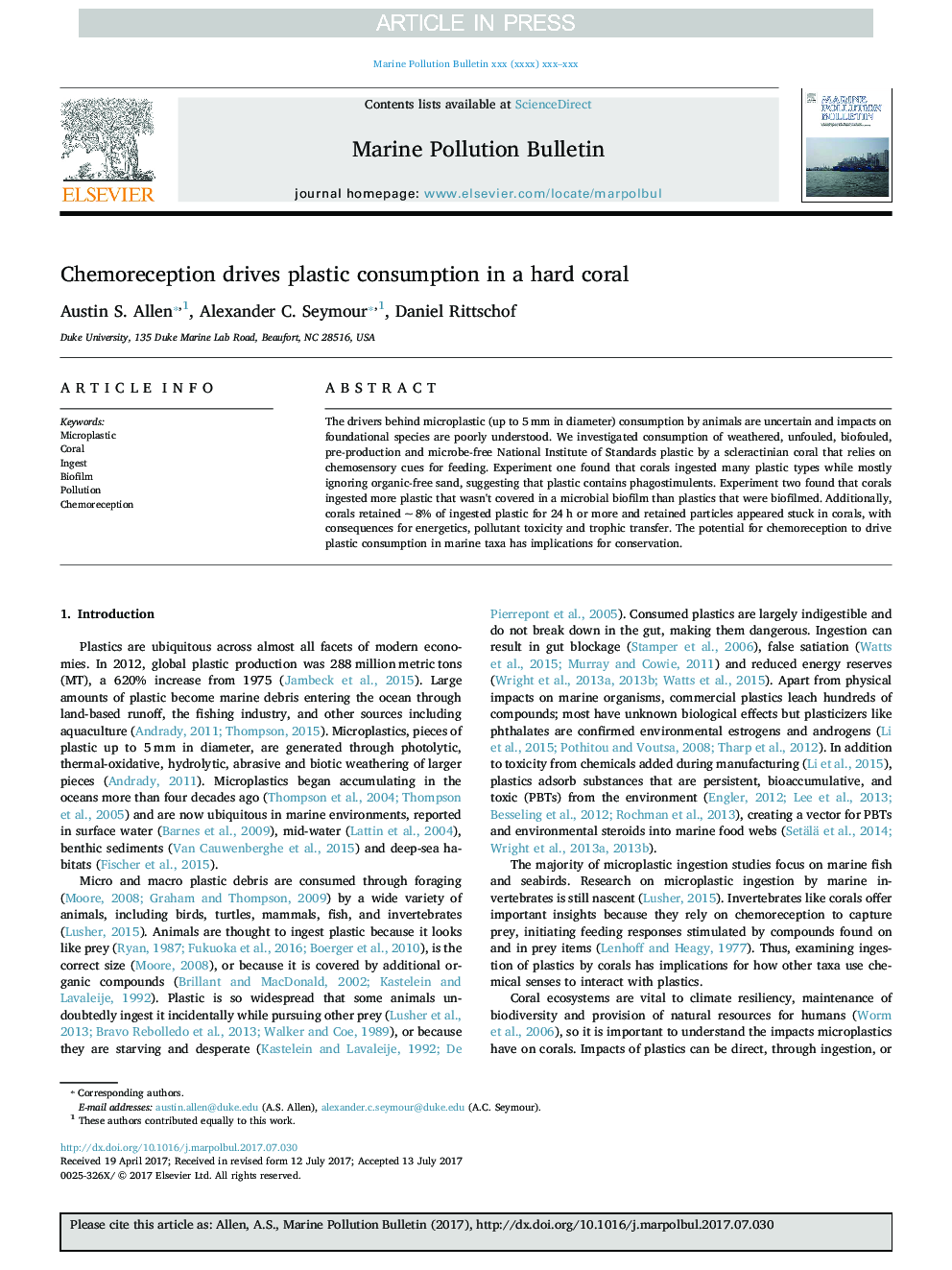| Article ID | Journal | Published Year | Pages | File Type |
|---|---|---|---|---|
| 8872199 | Marine Pollution Bulletin | 2017 | 8 Pages |
Abstract
The drivers behind microplastic (up to 5Â mm in diameter) consumption by animals are uncertain and impacts on foundational species are poorly understood. We investigated consumption of weathered, unfouled, biofouled, pre-production and microbe-free National Institute of Standards plastic by a scleractinian coral that relies on chemosensory cues for feeding. Experiment one found that corals ingested many plastic types while mostly ignoring organic-free sand, suggesting that plastic contains phagostimulents. Experiment two found that corals ingested more plastic that wasn't covered in a microbial biofilm than plastics that were biofilmed. Additionally, corals retained ~Â 8% of ingested plastic for 24Â h or more and retained particles appeared stuck in corals, with consequences for energetics, pollutant toxicity and trophic transfer. The potential for chemoreception to drive plastic consumption in marine taxa has implications for conservation.
Related Topics
Physical Sciences and Engineering
Earth and Planetary Sciences
Oceanography
Authors
Austin S. Allen, Alexander C. Seymour, Daniel Rittschof,
